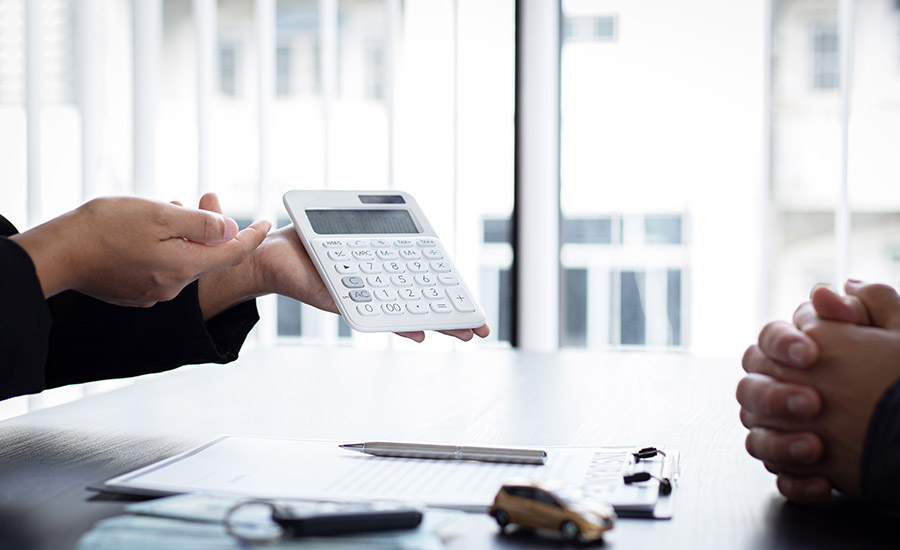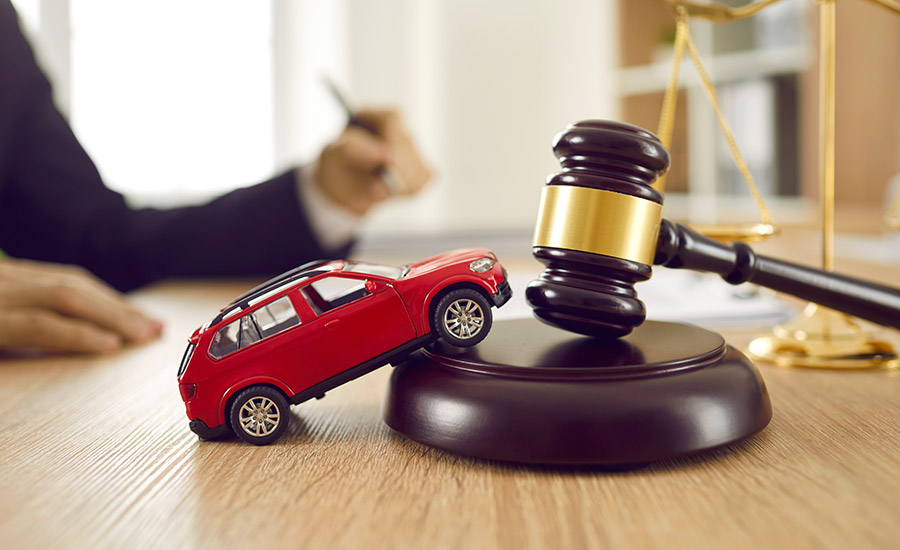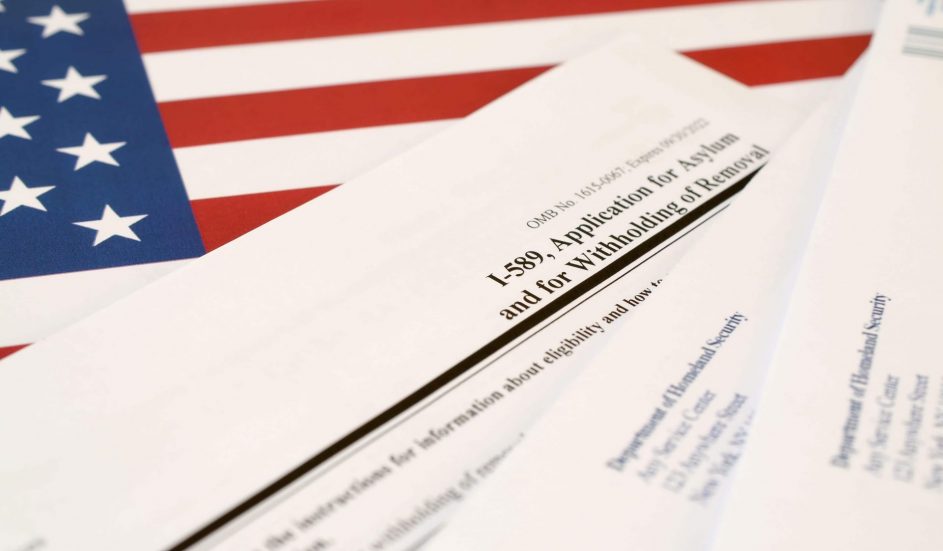

While the responsibility of determining fault, or liability, in a car accident falls on the police, insurance companies and court, understanding how fault is decided can help give you an inside look at the process.
We’ll explain how to determine fault in a car accident, by breaking down the roles of each party involved. We’ll also share how fault can affect you in both at-fault and no-fault states.
Who Determines Liability In A Car Accident?
There are several parties responsible for determining fault in a car accident, including:
- Police officers
- Insurance companies
- Judges or juries
If the case is complex and fault is disputed, the attorneys representing the plaintiffs may hire accident reconstruction experts and other independent investigators to provide expert testimony to the courts to advocate for their clients.
Each of these parties plays a significant role in ensuring an accurate evaluation of the accident circumstances and responsibility, which can affect the compensation for those involved in the accident.
How To Determine Fault In A Car Accident
Below is a breakdown of how each of the parties responsible for determining fault in a car accident contributes to identifying fault.
How The Police Determine Fault In A Car Accident
When called to the scene of an accident, law enforcement officers secure the scene and collect initial information about the accident.
They then create an accident report that includes a description of what happened along with their assessment of who might be at fault.
To complete their report, police officers:
- Examine car damage, skid marks, debris and road condition
- Determine whether traffic laws have been violated
- Create sketches of the accident scene
- Talk to witnesses, drivers and passengers
- Determine fault
Determining fault can be straightforward if there is a rear-end collision or traffic law violations, such as speeding or running a red light.
In some cases, a police report will not include fault determination. Fault could be left out from a police report if:
- The accident involved multiple vehicles
- The parties involved provide conflicting accounts of what happened
- There is not sufficient physical evidence
- There are no clear violations of traffic laws
- There are pending criminal charges against one of the parties involved in the accident
Police reports regarding fault can play a significant role in insurance claims and legal proceedings, because they provide:
- First-hand accounts from those involved in the accident
- An impartial assessment of the situation from a credible source
- A starting point in settlement negotiations
- A foundation for building legal arguments
How Insurance Companies Determine Fault In A Car Accident
After an accident, the insurance companies of the parties involved assign insurance adjusters to the case. The role of the insurance adjustor is to:
- Investigate the accident
- Examine vehicle damage
- Check medical reports
- Analyze photos and videos
- Evaluate the evidence
- Review witness statements
- Review driver histories and past claims
- Evaluate contributing factors, such as visibility, distraction and impairment
The findings of the insurance companies serve as a basis for defining the degree of fault for each driver and respectively determining the amount of compensation for each party.
How Independent Investigators & Reconstruction Experts Determine Fault In A Car Accident
If the case is complex and fault is disputed, the parties involved in the accident have the right to hire independent investigators or accident reconstruction experts.
These certified professionals have expertise in analyzing accidents and providing expert testimony of the accident to insurance companies, legal teams and courts.
Independent investigators:
- Analyze the accident scene
- Collect accident-related evidence, such as photos, videos and additional documents
- Assess the extent and location of vehicle damage
- Interview witnesses
- Analyze the weather conditions and road quality during the accident
- Review medical reports to understand the extent of sustained injuries
- Present expert testimonies in court
Accident reconstruction experts:
- Recreate the sequence of the accident
- Determine vehicle directions, speeds and points of impact
- Assess reaction times and braking distances
- Evaluate road conditions, weather and visibility
- Examine vehicle damage to understand collision dynamics
- Provide expert opinions in legal cases and insurance claims
- Testify in court as expert witnesses
Both independent investigators and accident recreation experts can be used to establish fault and liability.
How The Court Determines Fault In A Car Accident
Although not very common, your case may go to court, where a judge or a jury will determine fault.
Your case will go to court if:
- Settlement negotiations with the insurance companies fail (Keep in mind that even if negotiations with the insurance companies fail in the beginning, they can still negotiate even AFTER the case is in court)
- Insurance denies your claims
- Shared fault cannot be allocated to the responsible parties
- The parties involved disagree on evidence admissibility or credibility
To make their decision, a judge or jury:
- Reviews evidence and arguments
- Assesses relevant legal standards and traffic laws
- Listens to witness and expert testimonies
- Considers expert opinions, such as those provided by independent investigators and accident reconstruction specialists
If fault is shared by both parties, the court and/or a jury will define liability percentages for each party and determine how much your case is worth.
Degrees Of Fault In No-Fault States
The process of determining fault varies depending on whether your accident happened in a no-fault or in an at-fault state.
In the 12 no-fault states across the country, drivers are required to carry personal injury protection (PIP) insurance. In the event of an accident, this insurance covers each driver’s medical expenses and lost wages, regardless of who is responsible for the accident.
No-fault states typically have an accident threshold regarding serious injuries and permanent impairment.
If you were injured in an accident, you must meet the required threshold to have the right to sue the at-fault driver for additional compensation.
No-fault states include:
- New York
- New Jersey
- Florida
- North Dakota
- Michigan
- Minnesota
- Kentucky
- Utah
- Pennsylvania
- Massachusetts
- Hawaii
- Kansas
Property damage in no-fault states is typically covered by the insurance company of the at-fault driver.
Because rules can vary by state, and distinctions might not be clear-cut, contacting a knowledgeable personal injury attorney immediately after the accident is important.
Handling car accidents in New York and New Jersey for over 50 years, our team at Spar & Bernstein is well-versed in personal injury law and litigation.
Schedule a free consultation to discuss your case and get the best professional advice on your next steps.
Degrees Of Fault In At-Fault States
At-fault states follow comparative fault or contributory negligence rules.
In states with comparative negligence rules, each party is assigned a percentage of fault, and this percentage defines the amount of compensation you can get.
For example, if you are found 30% at fault for an accident, the compensation you are entitled to for your injuries and damages will be reduced by 30%.
In contributory negligence states, if you are found even 1% at fault for an accident, you are barred from pursuing any compensation.
At-fault states typically allow you to file a claim directly with the insurance company of the responsible driver, even if the initial costs were covered by the injured person’s insurance.

What To Do After A Car Accident
If you were involved in a car accident, the most important first step is to make sure everyone involved is OK.
After assessing injuries and calling 911, here’s what to do:
- Exchange information with those involved in the accident
- Collect evidence, including photos or videos of your injuries, license plates, vehicle damages, road signs, obstacles on the road or weather conditions
- File a police report
- Obtain a certified copy of the police report
- Call your insurance company to tell them you were in an accident, but do not go into detail about how the accident occurred
- Call a trusted attorney
- Keep detailed notes of all accident-related documentation, including expenses and medical records
Make sure you do not admit fault to any party, including the police or your insurance company. Only talk about the accident with your trusted attorney and allow them to handle all other communication with the parties involved.

Need Help Determining Fault In A Car Accident? Contact Spar & Bernstein
For more than five decades, our experienced team at Spar & Bernstein has protected the rights of people like you, who have suffered injuries in various situations, from motor vehicle accidents to construction accidents, premise accidents and more.
Approaching each case with care and compassion, our tenacious team fights for the best outcome in every case, while giving our clients support, guidance and peace of mind.
If you were involved in a car accident and need help determining who was responsible, contact our team. Our personal injury attorneys at Spar & Bernstein will:
- Determine fault
- Collect evidence and make sure no important detail is overlooked
- Collaborate with experts to clarify liability
- Interview witnesses to get valuable information that may be crucial to fault determination
- Negotiate maximum compensation with insurance companies
- Advocate for your rights in court if your case goes to trial
To get more information about our experience and the cases we have handled, check out our success stories. We focus on the legal aspects of your situation while giving you peace of mind to focus on your recovery.





